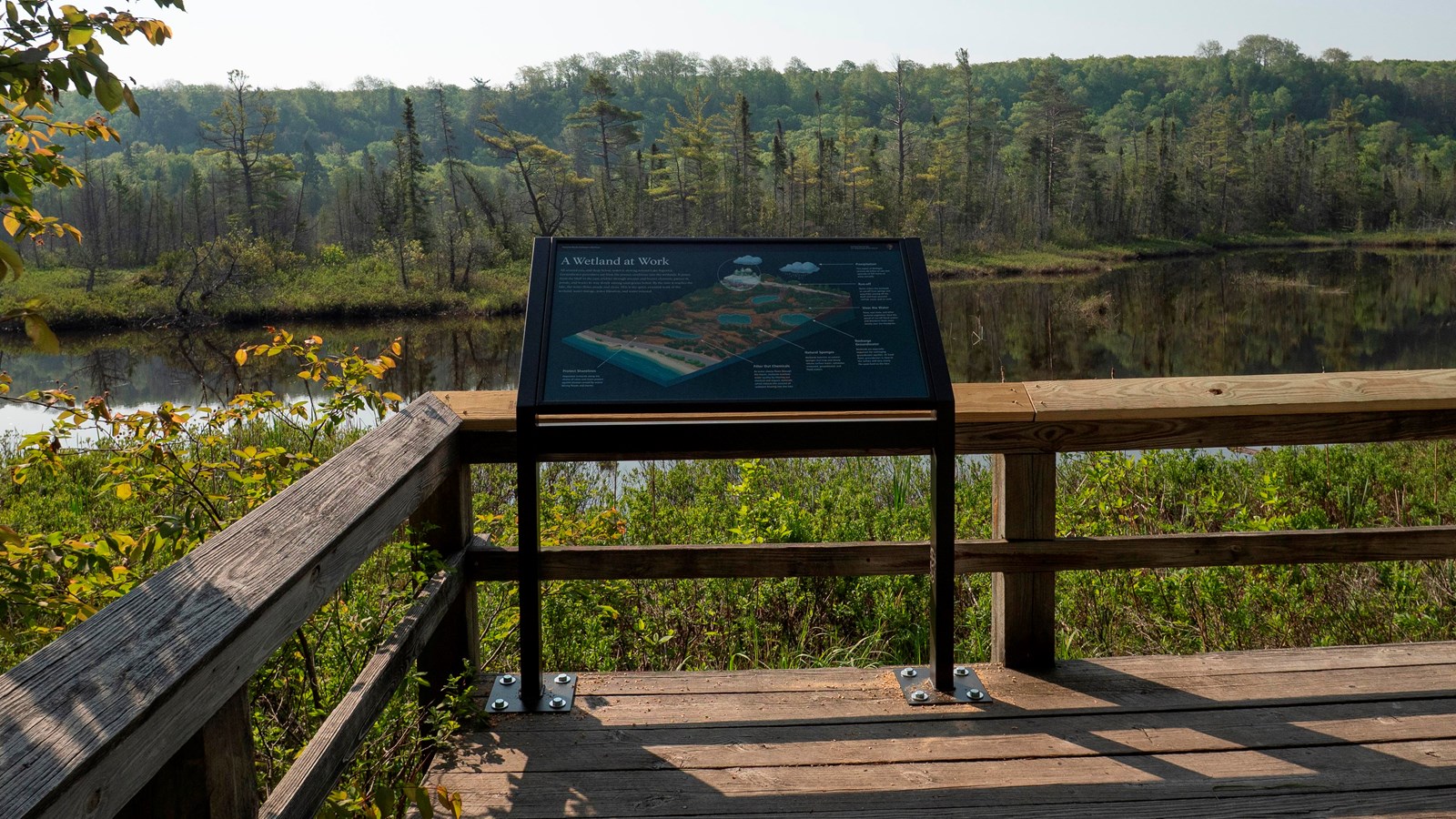Last updated: June 28, 2025
Place
A Wetland at Work Exhibit

A Wetland at Work
All around you, and deep below, water is moving toward Lake Superior. Groundwater percolates out from the porous sandstone into the wetlands. It pours from the bluff to the east, trickles through streams and beaver channels, pauses in ponds, and works its way slowly among sand grains below. By the time it reaches the lake, the water flows steady and clean. This is the quiet, essential work of the wetland: water storage, water filtration, and water renewal.
Precipitation
This region of Michigan receives 40 inches of rain and upwards of 220 inches of snow annually
Run-off
Water enters the wetlands as run-off from springs and waterfalls coming off the bluff and from seasonal rainfall, snow, and ice melt.
Slow the Water
Trees, root mats, and other wetland vegetation slow the speed of run-off flood waters and distribute them more slowly over the floodplain.
Recharge Groundwater
Wetlands are especially important for recharging groundwater aquifers. At Sand Point, groundwater is close to the surface and very nearly the same level as the lake.
Natural Sponges
Wetlands function as natural sponges that trap and slowly release surface water, rainwater, snowmelt, groundwater, and flood waters.
Filter Out Chemicals
As water slowly flows through the marsh, wetlands maintain water quality by filtering out chemical and organic materials which reduces the amount of sediment flowing into the lake.
Protect Shorelines
Vegetated wetlands along the shores of lakes and rivers protect against erosion caused by waves during floods and storms.
